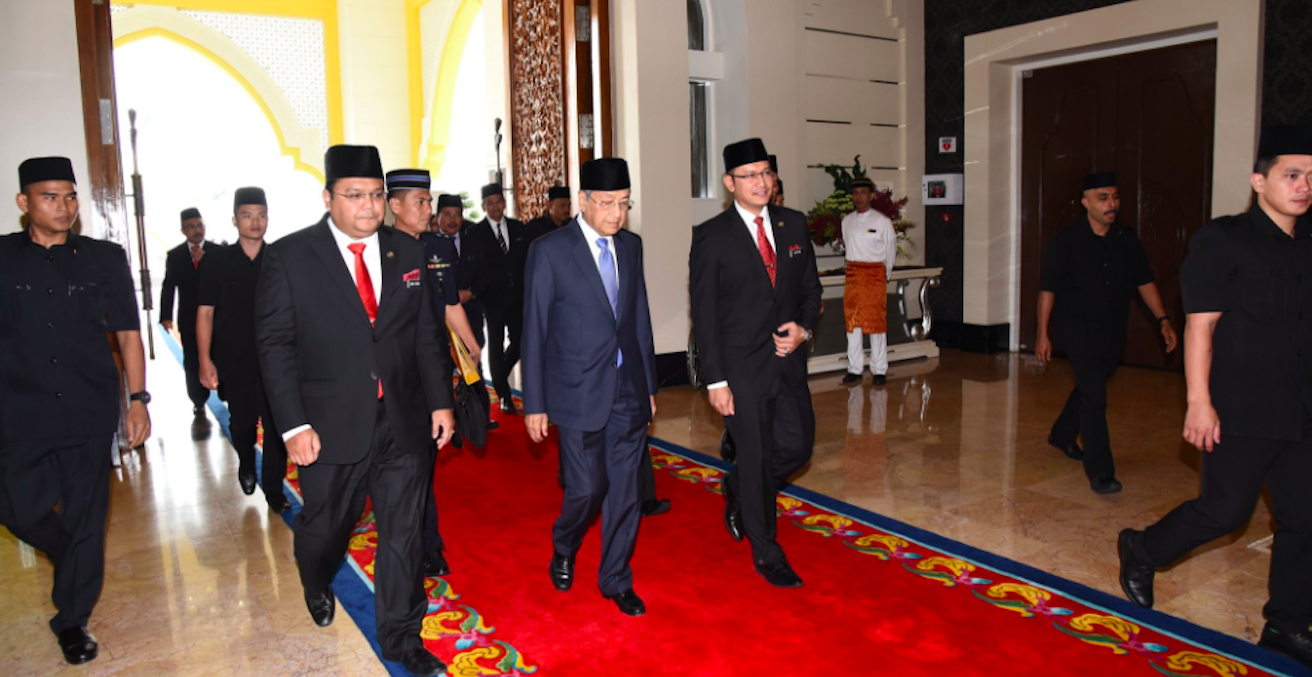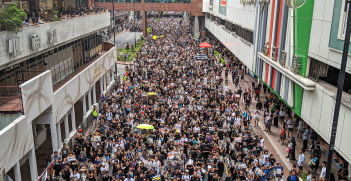Flipping the Chinese Threat: How the Malaysian Opposition Won

Corruption, the cost of living and social inequality helped drive Malaysia towards a change of government on 9 May. However, these factors were already present when a strong push failed to topple the government in 2013. What changed in 2018 to allow the opposition to achieve this historic win?
After 60 years of Barisan Nasional rule, a historic election result has brought a change of government to Malaysia. Voters registered their dissatisfaction with corruption, social inequality and palpable cost of living pressures worsened by low wages, poor services, and inadequate systems of social insurance. These underlying problems fuelled the fury voters directed against the GST, which the winning Pakatan Harapan coalition tapped into with its campaign around high prices.
With its intense focus on these issues, the 2018 campaign echoed that of 2013, when all these factors were already present and fuelling open discontent in Malaysian cities. That time, the opposition parties managed to carry the popular vote, building on even earlier electoral gains in 2008, and extending their record in government in two important states.
What they failed to do, however, was win government, forcing them to reckon with the reality that rural, majority Malay Muslim electorates, whose power is enhanced by Malaysia’s electoral system through gerrymandering and malapportionment, did not swing the vote strongly enough away from Barisan.
The factor that made this year so different was that the ongoing 1MDB scandal, running since 2015, caused Malaysia’s seemingly impervious ruling elite to finally fracture, fuelled by blows to elite and national pride delivered by international opprobrium. It was this scandal, according to former prime minister Mahathir Mohamad, that pushed him to join Pakatan Harapan and become its chairperson.
Mahathir is now Prime Minister again. He has revived the investigation into 1MDB that now-ousted Prime Minister Najib Razak shut down in 2015. What the Pakatan parties and civil society activists around them had managed to build over successive elections was a political alternative both strong and important enough to attract their campaign’s most important recruit to their side.
Mahathir’s decision to split Malaysia’s elite delivered an important advantage to Pakatan Harapan – his presence allowed it to weave voters’ moral and economic concerns into a well-crafted and wide-ranging political narrative that linked issues of local and global change.
Importantly, this narrative referred to the rise of China, which it connected with Malaysians’ collective memory of the trauma of colonisation. It also made use of race – an essential factor in Malaysian politics – and a factor the Pakatan parties could not get control of before Mahathir. With Mahathir, Pakatan seized the advantage of being able to deploy a racial threat away from Barisan, succeeding in using race against Najib in a way that neutralised his most effective weapon: the Chinese threat.
Flipping the narrative
Pakatan under Mahathir flipped the Chinese threat. It externalised this classic trope of Malay Muslim politics – so important in Malaya and Malaysia since the 1930s – to deflect Barisan’s attacks on one of its constituent parties: the “Chinese” Democratic Action Party, which Barisan accused repeatedly of aiming to extinguish Malay Muslim sovereignty. Instead of attacking the racism implicit in this accusation, however, Mahathir offered voters an alternative Chinese threat – “Big China” or the People’s Republic – and its Belt and Road (BRI) projects dotted around the Malay Peninsula.
In a 2016 interview, Mahathir said of Najib Razak, “He has tons of money.” “We are figuring out how to counter him of course,” Mahathir continued. “But obviously, we can’t outspend him.” In 2018, these words were echoed in an interview with a Pakatan strategist: “We can’t fight with money, so we must fight with narrative.”
Indeed, the Pakatan parties used to have a narrative problem. They were “too Chinese,” a channel for national minorities to express their grievances in a way that Islamists and Malay Muslim nationalists could construe as anti-national. In 2016, the state mufti of Pahang even called DAP members “kafir harbi,” unbelievers in a state of war against Muslims, a reference he then generalised to “any” who opposed Islam. The mufti was roundly criticised, but the opposition parties were effectively wedged by this moral panic against the DAP, code for the Chinese threat.
Creating an alternative vision
The Pakatan parties have invested significant resources in building a multiracial alternative to Barisan’s Malay Muslim nationalism. Since 1998, when Pakatan leader Anwar Ibrahim was first oppositionalised by Mahathir before resuming his position as his successor now, the parties and activists that later became Pakatan made a concerned push to switch between languages and communicate interculturally.
They have also code-switched between religious and secular discourses, focusing on building practical, everyday forms of solidarity around grocery prices and corruption. Their working multiracialism is one of their key strengths, without openly tackling the issue of restructuring race relations to improve social cohesion.
It has also been a key component of their appeal to nostalgia: one important theme of Malaysian minority politics is how it easy it was for Malaysians to get along at some time in the past, sometimes the 1990s, sometimes the 80s or 60s, depending on the age of the voters involved.
Yet their greatest successes have resulted when they have accompanied this national multi-racialism with an external threat. In 2013, this other was the “phantom voter,” a figure who is often set up as a foreign worker – usually Bangladeshi – who would be paid to vote in place of Malaysian voters who didn’t turn up to a polling place on election day. The last election’s high turnout was in part an effect of the centrality of the foreign phantom voter to the opposition’s get out the vote campaign.
This time, there was no need for phantoms with the spectre of China looming in the background. Pakatan campaign materials focused on Malaysia’s 1MDB debt as fuelling a new dependency on Chinese projects and finance. They presented the nation’s debt as the reason the state could not assist its people, whose suffering was increasing due to rising prices. One day in the future, when Malaysia defaulted on its payments, China would seize Malaysia’s assets, like it has in Sri Lanka’s Hambantota Port, extinguishing Malay Muslim sovereignty. Compared to this threat, the DAP surely pales into insignificance?
The conclusion to this argument was that only Mahathir and Anwar could possibly prevent Barisan from tricking Malaysians about where the real threat was coming from. Not only would they assert Malaysia’s independence from China, but they would restore Malaysia to a period before 1998, a “golden age” for Malaysia, when the economy was booming and intercultural interaction seemed so much easier.
The Big Chinese threat
The opposition wove the 1MDB debt into the region’s new multipolarity to construct an alternative Chinese threat to the DAP. They both made peace with many Malaysian voters’ racial fears, recognising that multiracialism had only taken them so far, and gave these voters an alternative outlet for them – the PRC. In the domestic sphere, they positioned themselves as protecting and defending minorities from chauvinist accusations.
By pointing to the external Big China and not the local Chinese, Pakatan presented themselves as national unifiers – a national front if you like, or in Malay, a Barisan Nasional.
Dr Amrita Malhi researches Malaysian history and politics and is a Visiting Fellow in the College of Asia & the Pacific at the ANU. She tweets from @AmritaMalhi.
This article is based on her presentation at AIIA ACT Branch on 23 May 2018.




